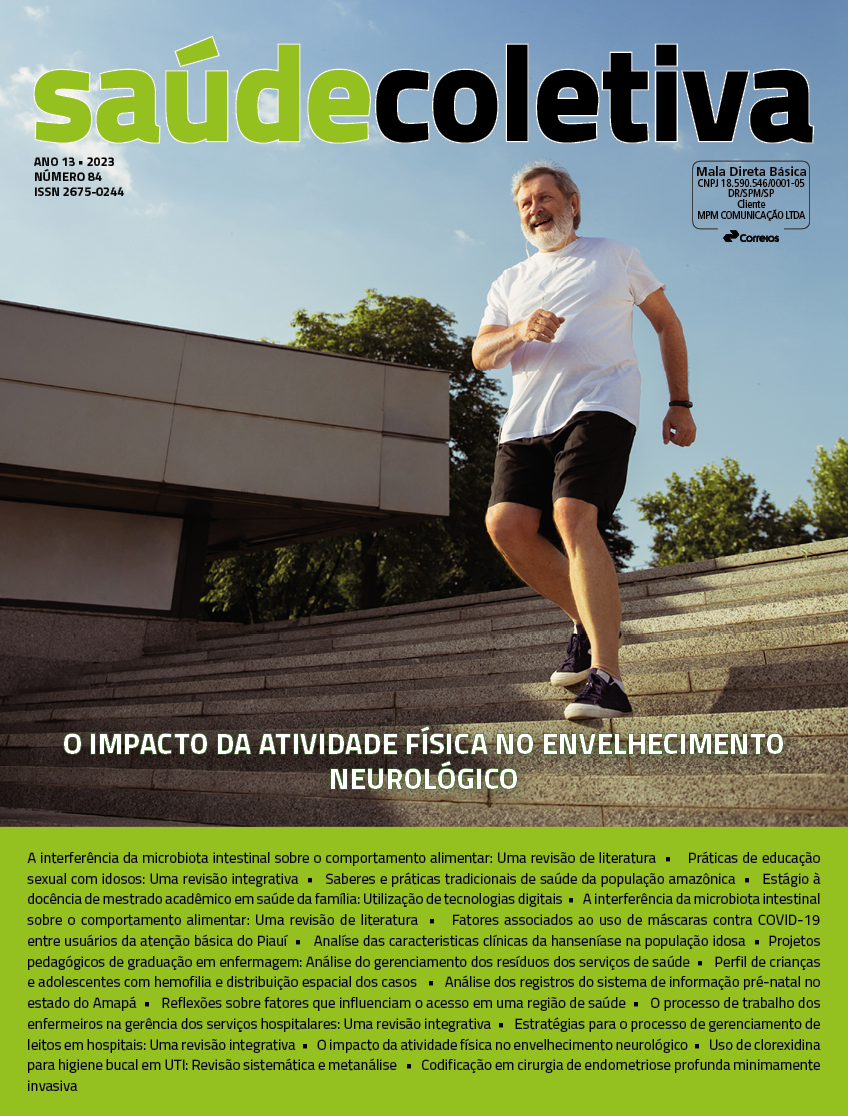Factors associated with the use of masks against COVID-19 among Piauí primary care users
DOI:
https://doi.org/10.36489/saudecoletiva.2023v13i84p12262-12275Keywords:
COVID-19, Preventive actions against diseases, Equipments for individual safety, Health Belief ModelAbstract
Objective: To identify factors related to the use of masks during the COVID-19 pandemic. Method: Cross-sectional quantitative study including 303 users interviewed between February and July 2021. Sociodemographic information, usage rate, information universe, perception of susceptibility and severity of the disease and perception of the benefit of the mask were analyzed. Descriptive statistics and regression analysis were performed. Results: Wearing a mask was the most received information (95.7%); the most implemented measure (93.7%); and the most important method (53.3%) according to users. Television was the main information vehicle, but the health agent was the safest source. Most classified the disease as severe and were indecisive about the protective potential of the mask. Higher level of income and education were predictors of greater confidence in the measure. Conclusion: Users adopted masks on a large scale, but the sense of protection was low. Such findings may support communication strategies in future pandemics.
References
Iwaya GH, Cardoso JG, Sousa Júnior JH de,Steil AV. Preditores da intenção de permanecer em distanciamento social. RevAdm Pública. 2020;54(4):714–34.
Ortelan N, Ferreira AJF, Leite L, Pescarini JM, Souto AC, Barreto ML, et al. Cloth masks in public places: An essential intervention to prevent COVID-19 in Brazil. Cienc e Saude Coletiva. 2021;26(2):669–92.
Costa MF. Health belief model for coronavirus infection risk determinants. Rev Saude Publica. 2020; 54:1–11.
Sim SW, Moey KSP, Tan NC. The use of facemasks to prevent respiratory infection: A literature review in the context of the Health Belief Model. Singapore Med J. 2014;55(3):160–7.
Pereira-Ávila, FMV; Lam, SC; Gir, E; Góes, FGB; Freire, MEM; Silva, ACO. Factors associated to the practice of using masks by the population of Paraíba during the COVID-19 pandemic. Rev Esc Enferm USP. 55: e03735, 2021.
Maciel FBM, Dos Santos HLPC, Carneiro RA da S, de Souza EA, Prado NM de BL, Teixeira CF de S. Community health workers: Reflections on the health work process in covid-19 pandemic times. Cienc e Saude Coletiva. 2020; 25:4185–95.
Pennycook G, McPhetres J, Zhang Y, Lu JG, Rand DG. Fighting COVID-19 Misinformation on social media: Experimental Evidence for a Scalable Accuracy-Nudge Intervention. Psychol Sci. 2020;31(7):770–80.
Cheng VCC, Wong SC, Chuang VWM, So SYC, Chen JHK, Sridhar S, et al. The role of community-wide wearing of face mask for control of coronavirus disease 2019 (COVID-19) epidemic due to SARS-CoV-2. J Infect. 2020;81(1):107–14.
Clark C, Davila A, Regis M, Kraus S. Predictors of COVID-19 voluntary compliance behaviors: An international investigation. Glob Transitions. 2020; 2:76–82.
Tang CSK, Wong CY. Factors influencing the wearing of facemasks to prevent the severe acute respiratory syndrome among adult Chinese in Hong Kong. Prev Med (Baltim). 2004;39(6):1187–93.
Bavel JJV, Baicker K, Boggio PS, Capraro V, Cichocka A, Cikara M, et al. Using social and behavioural science to support COVID-19 pandemic response. Nat Hum Behav [Internet]. 2020;4(5):460–71.
Chen X, Chen HH. Differences in preventive behaviors of covid-19 between urban and rural residents: Lessons learned from a cross-sectional study in China. Int J Environ Res Public Health. 2020;17(12):1–14.
Islam MS, Sarkar T, Khan SH, Mostofa Kamal A-H, Hasan SMM, Kabir A, et al. COVID-19–Related Infodemic and Its Impact on Public Health: A Global Social Media Analysis. Am J Trop Med Hyg. 2020;1–9.







